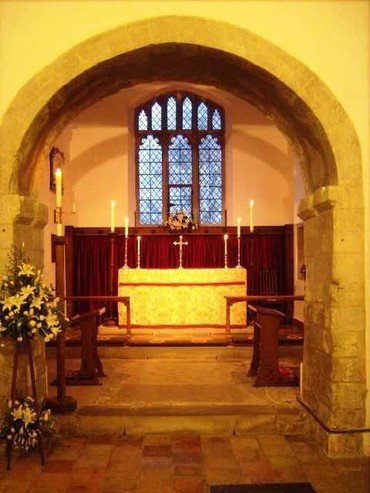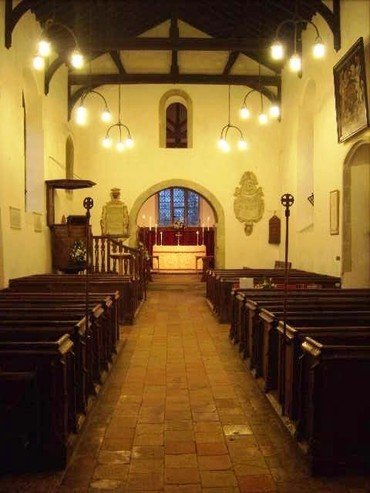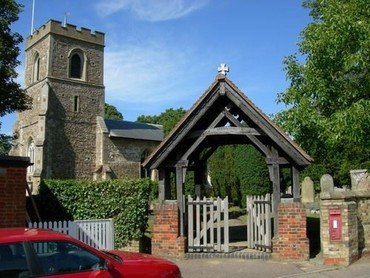Welcome to St Nicholas Church
St. Nicholas Church, Church Lane in the old village of Norton, dates back to 1110.
It was the parish church for 850 years until St. George's was built in 1964. It is still in use as a place of worship and is classified as a Chapel of Ease.

The core of St Nicholas was built soon after 1110 by the Benedictine monks of St Albans who owned this small village, its feudal labour and profits. It almost filled the current nave with thick walls and low flat roof that ended at the curved chancel arch with small chapels either side. After the Black Death of 1350 a reduced non-feudal and wealthier population was willing to donate legacies to improve this church and to perhaps ensure their own place in Heaven. The walls were raised and the lower parts punched through to incorporate the current windows and the nave extended back to meet a newly built tower with bells. We still have intact one bell of around 7cwt cast in 1440. The alterations are easily traced both inside and out about halfway up the windows on the north and south walls. To the left of the chancel the thick wall was excavated to make a staircase to a raised gallery from where the Word of God might seem more dominant. Parish wills exist from 1420 and one mentions the cost of constructing pews: some of these are still preserved and easily spotted by their excess of woodworm and the smooth corners as hands have been steadied on them for 600 years. Within 100 years the Catholic Monastic property was abolished by Henry V111 and profit was the name of the game.
Absentee landlords bought the agricultural rights; absentee investors bought the lowly church taxes and patronage and the fabric of the church declined. In 1630 the parish was acquired by the Cleavers of London as a second home. They preferred their country life at Nortonbury and probably installed the current pulpit. By the 1600’s the Pym family bought this as their first property outside London and were buried here but their interest in the church was poor witnessed by the graffiti boldly scratched all over the font including one WS 1694. Pyms and Cleavers are commemorated in memorials either side of the chancel arch. The church lapsed into a period of steady decline of absentee vicars and absentee congregation and a vicarage so dilapidated that in 1834 the curate had permission to live in Baldock. ( back left pew has bold schoolboy carving dated 1827) The father of that curate Joseph Watson purchased the living for his son, rebuilt the vicarage as it is today and stimulated the local landowners (Pryor family buried in chancel) to refurbish the church especially the roof. This new vicar died a few years later and was followed in 1840 by George Pierson the son of a Hitchin banker who remained in office for the next 68 years and his achievements include creation of the school

and further refurbishment of the church interior. He was a widower for many years and probably remained in office too long as the developing years of the new Garden City needed a successor from an urban background; that was John Bailey whose father was a vicar in industrial Staffordshire. He gave great pastoral care praying daily by name for all men serving in WW1, heart-rending letters to him from soldiers are still preserved and their deaths recorded on the memorial on the north wall. After he retired in 1950 the main focus of Sunday worship transferred to St Georges Hall and then the new church.
The church may seem plain and ordinary but it deserves great respect. A monastic beginning means there are no memorials to knights of old who battled Frenchmen and the parish has never been owned by families of significant wealth to install funerary monuments and stained glass. It has the virtue of age and tradition without senility. Walk into it down steps because the southern graveyard is raised by 900 years of burials of the faithful; listen to eight bells in a tower built 550 years ago for only three; fondle the smooth corners of the very old pews and add to the prayers of hope and thanksgiving that have echoes in its thick walls.
There is much more detailed information in a book on St Nicholas by Deborah Giles and there are detailed separate laminated sheets at the church on the fabric, the memorials and the graveyard - exerpts can be read by clicking the aisle photograph.
History of the church shared by David Green


